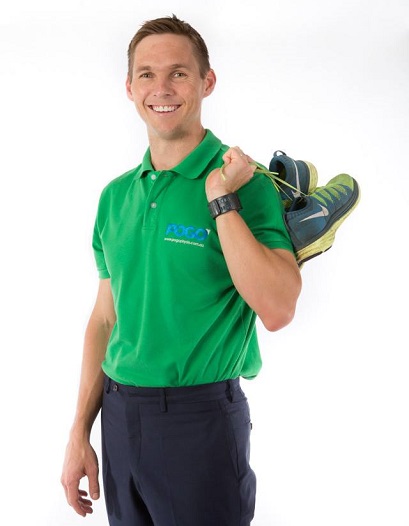Welcoming 2nu, the official sunglasses of the Gold Coast Marathon presented by ASICS
2nu joins the Gold Coast Marathon presented by ASICS as the official sunglasses.

By Brad Beer
As a physiotherapist, I have observed that training errors play a major part in overuse running injuries. I regularly treat injured runners who, when their pre-injury training history is chronicled, have had a recent sudden increase in training volume, frequency and/or intensity. Alternatively, their training hasn’t changed but they have neglected to schedule rest sessions.
Inadequate rest can lead to the seven most common running injuries – runner’s knee, plantar fasciitis, ITB friction syndrome, shin splints, hamstring injuries, achilles tendon injuries and calf injuries.
Here are five common training errors to avoid:

The temptation to do more to get more is often intoxicating for runners. Many runners are literally ‘addicted’ to the positive feelings that running produces. Runners can literally experience withdrawal signs from not running due to not experiencing their routine hit of ‘endorphins’ and other happy hormones (such as serotonin) that they would usually experience in full and uninterrupted training.
Endorphins are substances that the body’s central nervous system and pituitary gland produce. The term endorphin means ‘morphine like substance’. Hence, endorphins’ role is to block pain that the body experiences. When a runner trains they routinely experience positive happy hormone effects and their ‘pain’ can be blocked by endorphins. It can be addictive! Not running for even a single day can, therefore, be a challenge for many runners.

Doing too much too soon can be a pitfall of the over-zealous beginner runner who just wants to run ‘more and more’. It can likewise be the pitfall of the eager runner returning from an enforced break due to injury. For example, a beginner runner that builds up the duration (and distance) of their training sessions too quickly. Alternately, an experienced runner may increase the overall weekly volume of their training too quickly, from one week to the next in preparation for a major event.

Not every training session needs to be an intense workout. Runners must learn to discipline themselves in varying the pace and intensity across different training sessions. Many times the excitement of training takes hold and common sense and patience are erroneously forgotten. The result is that every training session ends up hard and intense. This can be a trap runners fall into when they train in a group or with others. Unfortunately, when training with groups, the temptation is ever present to begin racing with your training partners. Proceed with caution!

This often occurs when a runner is feeling ‘fit’ and highly motivated. I’m personally a sucker for this one. If I have had a good race or run at a Sunday event, rather than rest on the Monday morning, I can be tempted to get up and run a moderate length run (often at too fast of a pace) still ‘high’ on the endorphins of the good race from the day before. After competing in a running event or race, even if you do not feel like you need a rest – take one. Th is will allow your body sufficient time to recover.
The same principle holds true during training blocks where you get on a ‘roll’ and feel like you can run fast every single training run with seemingly no consequences. Be very careful when this happens. Discipline yourself to still run slowly on a recovery run, fight the temptation to turn what should be a recovery run into another hard run, and most certainly don’t miss rest days.

Problems occur when hills are introduced into a running training program too quickly, or in too great of a volume or frequency. The inclines and declines associated with hills add greater load to the body’s tissues. A good training program will factor in training that is completed on hills and will make allowances for appropriate recovery after hill running. For example, running uphill is often an irritating factor for an Achilles tendon, because the uphill movement increases compression of the Achilles tendon, which can create irritation of the tendon and surrounding tissues and subsequently produce pain.
A well-structured training program will allow sufficient recovery time before the runner tackles hills again in order to decrease the risk of developing an Achilles tendon injury. For the runner accustomed to hill running, this may be in two days; while for the unaccustomed hill runner, it may require four to five days to adequately recover.
Simply being aware of these five commonly made training errors will go a long way in helping you to avoid them, before going on to enjoying injury-free and faster running.
All the best with your training,
Brad Beer
Physiotherapist, Founder POGO Physio, Author You CAN Run Pain Free!

Brad Beer is a Gold Coast based physiotherapist who throughout his career has delivered in excess of 25,000 physiotherapy consultations. In 2006, Brad founded a physiotherapy group called POGO Physio which, since inception, has treated over 16,000 people.
Recognised as a leading authority on running injury prevention and rehabilitation, Brad himself is an avid runner and is passionate about seeing people unlock their true running potential.
Brad believes that all runners can and should experience pain and injury free running. In 2015 Brad released his first book You CAN Run Pain Free! A Physio’s 5 Steps to Enjoying Injury Free and Faster Running to educate runners that it is indeed possible to enjoy the many benefits of pain free running. Brad’s clients include age group, novice, beginner, and elite athletes. Brad has assisted his clients in winning multiple Australian, world, and even Olympic medals.
Follow Brad’s running advice online:
POGO Physio | pogophysio.com.au
Website | bradbeer.com.au
Twitter | @Brad_Beer
Instagram | @Brad_Beer
RUNNERS. TAG YOUR PHOTOS WITH #GCM24